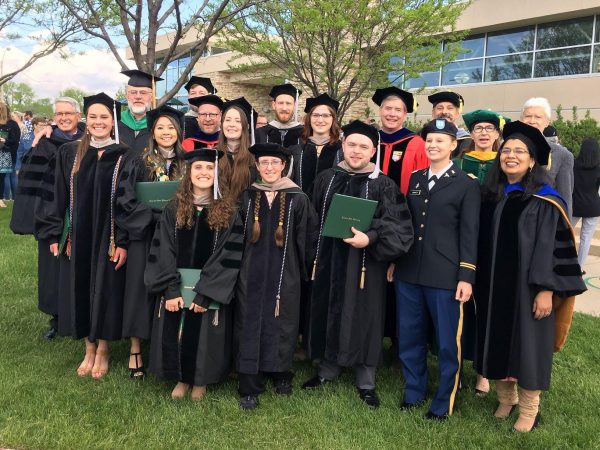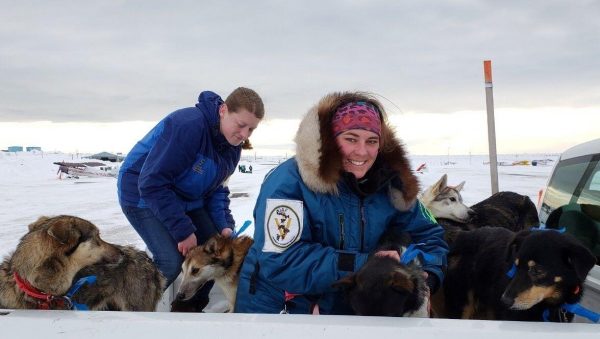
The first graduates of a new veterinary-medicine program offered through the University of Alaska Fairbanks have all been hired to work here in Alaska and the Lower 48. UAF officials say that shows the program is needed to fill a strong demand for veterinarians in Alaska.
Liz Millman is one of the 10 UAF veterinary-medicine students who graduated in May. She plans to specialize in caring for sled dogs, like those that powered Iditarod musher Deedee Jonrowe.
“I discovered I wanted to be a vet when I think I was three years old,” Millman said in a recent interview. “And I think it was when I was seven when I first learned about sled dogs back in Wisconsin, where I grew up, and that I wanted to be a sled dog vet and work the Iditarod.”
Millman had just completed undergraduate study in Wisconsin when she came to Alaska in 2013 and got a job with Jonrowe. She says she loved it up here, but she wanted to continue with her education and at that time, Alaska’s universities didn’t offer a veterinary-medicine program.
Then she learned UAF was setting one up, through a partnership with Colorado State University.

“Shortly after I moved to Alaska,” Millman said, “I heard about this program starting and decided I’d try one more time at applying. And lo and behold! I got in on the first class in 2015.”
Karsten Hueffer heads up the program. He’s the associate dean of veterinary medicine at UAF, and he says the university was fortunate to link-up with Colorado State.
“So, they’re like one of the top programs in the country,” Hueffer said.
The program requires the 10 UAF students to attend their first two years of graduate-level instruction at UAF and their second two at Colorado State.
“The clinical part, working with actual patients, becomes so important in the third and fourth year of veterinary school,” Hueffer said.
Hueffer says the students must go to Colorado for those two years, because Alaska just doesn’t have the volume and variety of animal patients, especially livestock, that the students need. But he says they and the other 140 students in this year’s class get plenty of opportunities for hands-on instruction at Colorado State, because agriculture is a big industry in that area.
“In the state, we have two I would small pockets of what one would consider an industry, in Palmer and Delta,” Hueffer said. “And those are relatively small, compared to other states that have veterinary schools. I mean, in Colorado, ranching is huge.”
Hueffer said, on the other hand, the UAF students get experience working with animals that aren’t available in Colorado, like domesticated wildlife species.
“For example, the students get opportunities to work with reindeer at the Large Animal Research Station,” he said. “So, they do not only work with cows and other normal livestock.”
Hueffer says the UAF-Colorado State program has attracted a lot of attention in Alaska, both from those in the ag industry and those who operate veterinary clinics. Not only because of the quality of instruction, but also the requirement that students spend their first two years in Alaska.
“Quite a few clinic owners that I talk to, they sometimes struggle with getting people from Outside come up, not knowing what they’re getting themselves into – and then minus 40 hits and they can’t get out of here quick enough,” Hueffer said.
Hueffer says that may be part of the reason why all 10 of the UAF students got jobs soon after they got their diplomas.
Tim Ellis is a reporter at KUAC in Fairbanks.




